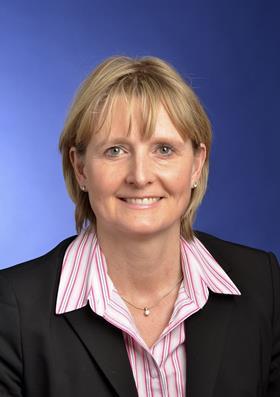Beccy Fenton and Jenny Panes emphasise on weathering the winter storm in UK healthcare through collaboration, integration, and system-wide planning
There is a deep worry amongst NHS leaders and staff about how our healthcare system will stand up to all the challenges that winter in the UK throws at it. Last year, with the knock-on effects of covid still pronounced, it felt like the toughest winter the NHS had ever faced. Despite the best efforts of staff, long delays and increased risk to patients were inevitable as both emergency access and elective waiting times increased.
Sponsored by


This year, in addition to the usual pressures, there are new challenges which will further exacerbate things – workforce gaps, high levels of leavers and the industrial action of recent months which has taken a significant additional toll, eating into hard-fought gains as the NHS continues to recover from the peak of the pandemic. Recently we have seen a step change increase in elective waiting lists – before winter has even begun. Worse still, more industrial action is planned and/or threatened.
However, there are ways of doing things better and fundamentally this is about collaboration and integration and using the powers that integrated care boards have been given to move away from siloed providers seeking to perform as individual organisations and instead becoming aligned and driven by improving the health of their local populations.
History shows that our acute providers cannot weather the challenges alone – a system-wide response is needed to plan together and deliver together – whether that be sharing of beds, resources, workforce, information and risk – like we did during the pandemic. Local system working is key – and this includes the role of primary care, they must continue to step up and become a proactive partner of the healthcare system, driving innovation to deal with the winter pressures as they did throughout the pandemic.
In addition to collaborative and integrated system working, we also need to systematically redesign care pathways to prevent people from unnecessarily attending emergency departments or being admitted to hospital. The scale of the challenge and focus required has meant that urgent and emergency care, elective care and cancer care are all predominantly managed (and performance managed) separately across individual NHS provider organisations – with separate governance, separate monitoring and separate targets. Each organisation is separately trying to recruit to vacancies, separately planning its demand and capacity and separately trying to fix many issues that are common to all NHS providers. This set up results in significant duplication and variation and not to mention a poor service for NHS patients as they try and navigate the system.
In our work with systems and providers across the UK and globally we see considerable appetite to work in a more integrated manner that reflects how patients themselves want to receive care
We do however have a strong set of national urgent and emergency care priorities which focus on the entire pathway as set out in the UEC recovery plan. But how clear are regional and local leaders on the quantified impact that delivering that plan will have on reducing avoidable attendances and admissions, on delayed discharges and flow, and, by extension, elective performance which as we know will be massively impacted by a lack of beds? For example, how many beds do we free up nationally by hitting SDEC best practice standards, delivering the virtual ward target or by embedding a consistent Single Point of Access in each of the 42 ICSs?
The interventions of the UEC plan need to be mapped and quantified onto both the UEC pathways and the elective pathways to create a quantifiable impact for the system. And likewise, the impact of elective recovery initiatives also needs to be modelled and quantified to understand their impact on UEC pathways.
In our work with systems and providers across the UK and globally we see considerable appetite to work in a more integrated manner that reflects how patients themselves want to receive care, but often the underpinning governance, performance management and incentives aren’t there to make it achievable in practice. It must be accomplished by setting direction for true integration at a regional and ICS level. Some of the things we have seen work so far are as follows:
- Focus on an evidence-based prioritisation of a small number of priority actions that truly get to the root cause of performance challenges and make a real difference.
- Rigorously track and monitor the impact of work done against the indicators that really matter – keep what’s working and switch off the things that aren’t delivering results. If necessary, scrap that 100-point plan!
- Put in place governance, reporting and an integrated operating model which incentivises collaboration and integration across all areas of the system and across all staff groups.
- Take a systematic approach to redesigning care pathways one by one, involving users and front-line staff in the redesign of care that removes waste and improves experience for both the user of the service and the staff providing it
- Work together to understand your workforce gaps, stop competing for the same staff and collaborate to integrate rotas, terms and conditions and values and behaviours drawing from best practice in your system.
- Target specific digital interventions which will quickly improve productivity and efficiency and free up bed capacity
- Invest in modern cloud based real time predictive data analytics so you aren’t “flying blind” and can focus on prospective over retrospective management.
- Accelerate change by learning from mature global systems like Clalit in Israel who have one of the world’s most progressive primary care services and have successfully shifted the balance from acute care to community and preventative care and improved outcomes for patients as a result.
The months ahead are going to be a challenge. But if a better interlock can be achieved between national, regional, and local agendas to promote system-wide working, supplemented by more integration across care pathways, there is every prospect of weathering the winter storm.


























